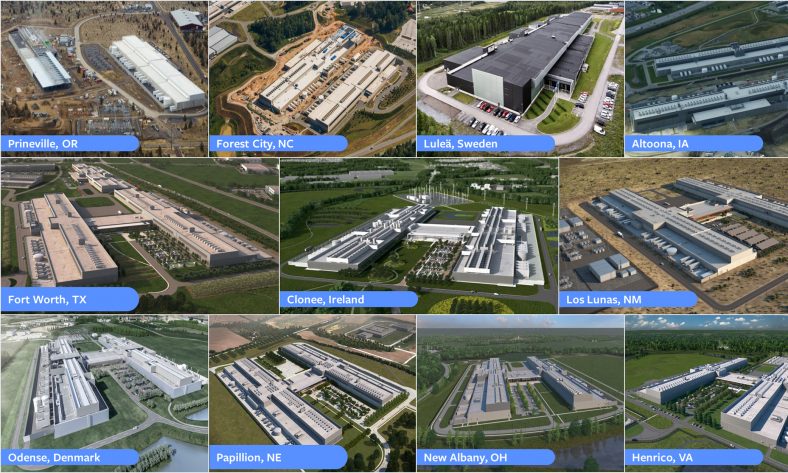When companies sell us the cloud, it seems that they are talking about something magical and fantastic. Its imagery is futuristic looking, filled with shiny lights, and coming from a science-fiction movie. However, we are not concerned about what the cloud is. They are black-boxed and top-secret places, where all our information takes live.
We have seen attempts from the companies to make those spaces more transparent. They open the doors to the cameras and display all the machines. Yet, this hypervisibility of the infrastructure and this pure image that they give of the cloud allows them to keep the people naive.
The truth is that the cloud relies on data-centers that stock all that information that we generate every day. One of its effects is the need for infrastructure around the planet. These buildings are environments designed from humans to robots, and for that reason, their design is a copy-paste around the world. Data-centers are structures designed for machines, which means that no human is working in that environment, so there is no need to follow cultural necessities.

Images from data centers around the globe.
In the same manner during industrialization, the landscape was also affected by the construction of new buildings. Hilla and Bernd Becher, two german photographers, recorded these changes in the landscape from the late 1950s [1]. In their work, we can see collections of images depicting industrial buildings. Even if the buildings have very similar shapes because they have the same finality, there are subtle differences probably because of the construction methods and the cultural necessities from each place.

Pictures from Hilla and Bernd Becher’s work.
In the future, we will need more infrastructure to support all the data that we generate. Jennifer Holt and Patrick Vonderau write about one of the upcoming “technological dramas” that the technology in data storage is not as developed as the amount of information to store [2]. In conclusion, the landscape is going to be even more exploited in the future, overcrowded with the same buildings all over the surface.
References:
[1] Biro, M. (2012). From analog to digital photography: Bernd and Hilla Becher and Andreas Gursky. History of Photography.
[2] Holt, J. and Vonderau, P. Where the Internet Lives. Data centers as cloud infrastructure. Signal Traffic.
~ Alicia Romero

